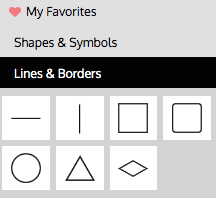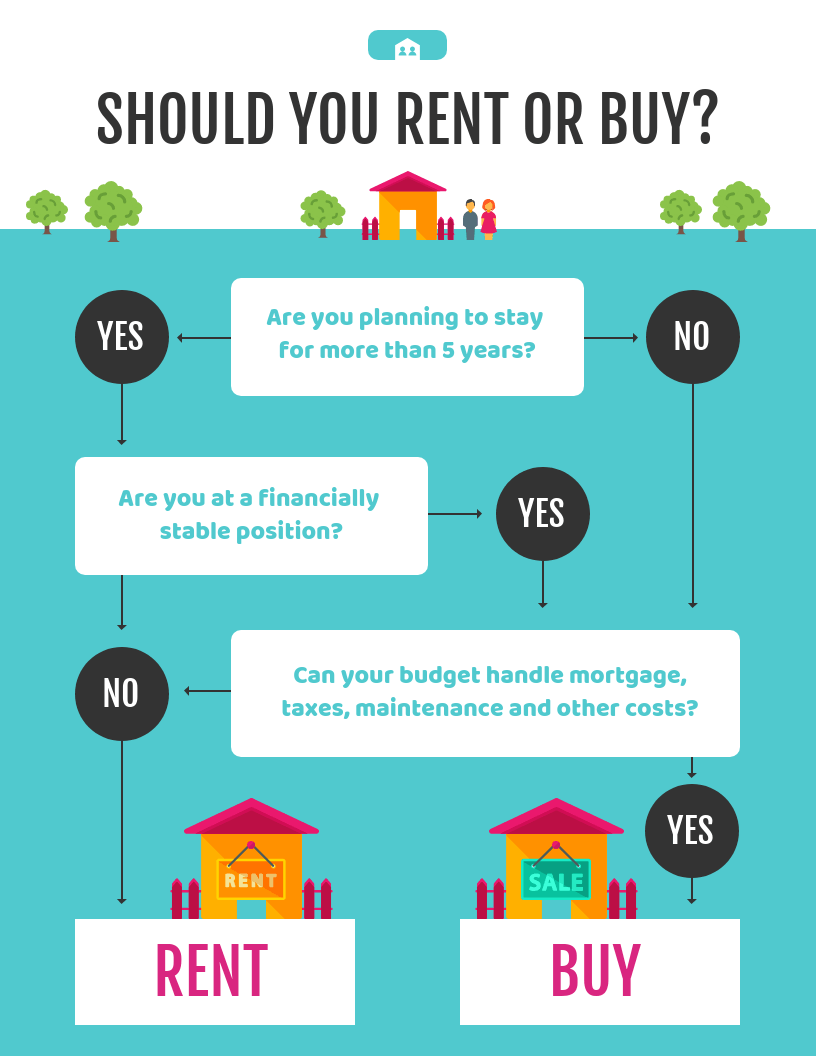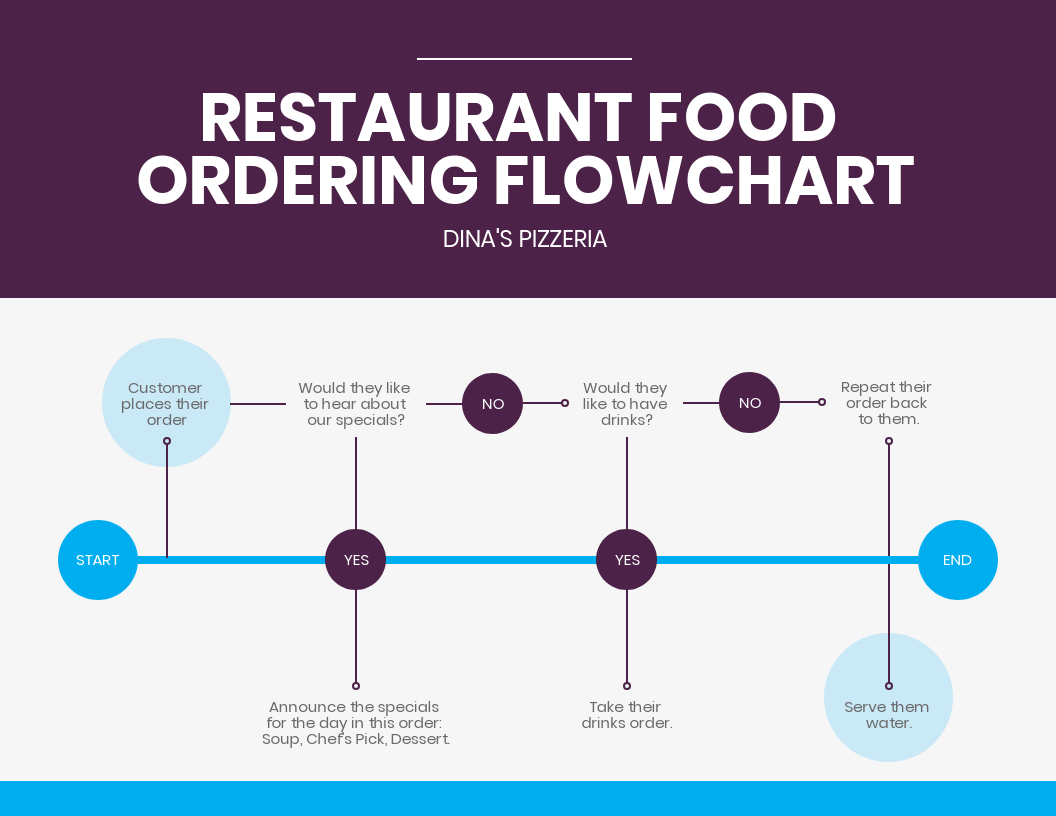Ever wondered how to break down and examine your decisions so well that you can determine potential outcomes, assess various risks and ultimately predict your chances for success?
That’s where a decision tree comes in — it’s a handy diagram to improve your decision-making abilities and help prevent undesirable outcomes.
In this step-by-step guide, we’ll explain what a decision tree is, how you can visualize your decision-making process effectively using one and how you can make a decision tree easily using Venngage’s professionally designed tree diagram templates.
Click to jump ahead:
- What is a decision tree?
- Decision tree symbols & meanings
- How to make a decision tree
- Decision tree examples
- Decision tree best practices
- Why should you make a decision tree?
- Decision tree FAQs
What is a decision tree?
A decision tree is a specific type of flowchart (or flow chart) used to visualize the decision-making process by mapping out different courses of action, as well as their potential outcomes.
Decision trees are used in various fields, from finance and healthcare to marketing and computer science. They are particularly useful for complex decisions where there are multiple options and uncertain outcomes.
A decision tree helps you figure out your choice step-by-step. It does this by asking you smaller questions, one at a time. It’s like having a checklist to follow so you don’t miss anything.
Decision tree symbols and meaning
Take a look at this decision tree example. There are a few key sections that help the reader get to the final decision.

Decision trees typically consist of three different elements:
Root Node
The top-level node represents the ultimate objective or big decision you’re trying to make.
Branches
Branches, which stem from the root, represent different options — or courses of action — that are available when making a particular decision. They are most commonly indicated with an arrow line and often include associated costs, as well as the likelihood to occur.
Leaf Node
The leaf nodes — which are attached at the end of the branches — represent possible outcomes for each action. There are typically two types of leaf nodes: square leaf nodes, which indicate another decision to be made, and circle leaf nodes, which indicate a chance event or unknown outcome.

When formed together, these elements loosely resemble a tree, which is where the diagram gets its name. This gradient decision tree diagram example shows you how it works.

Although you can certainly make a case for Grandmother Willow’s age-old advice to “let your spirits guide you”, sometimes a more formalized and calculated approach is necessary. This is why decision trees are so effective.
Just so you know, some of our templates are free to use and some require a small monthly fee. Sign up is always free, as is access to Venngage’s online drag-and-drop editor. With Venngage’s decision tree maker, you can use multiple colors to represent different types of decisions and possible outcomes.
How to make a decision tree?
1. Start with your overarching objective/ “big decision” at the top (root)
The overarching objective or decision you’re trying to make should be identified at the very top of your decision tree. This is the “root” of the entire diagram.
Hot Tip: With Venngage, you can make a decision tree by quickly adding in different shapes and lines without having to draw them from scratch.

2. Draw your arrows
Draw arrow lines for every possible course of action, stemming from the root. Include any costs associated with each action, as well as the likelihood for success.
3. Attach leaf nodes at the end of your branches
What are the results of each course of action? If it’s another decision to be made, draw a square leaf node. If the outcome is uncertain, draw a circular leaf node.
The decision tree example below includes numerous branches and leaves for each decision. This makes the process easier for the staff to understand and follow.
With Venngage for Business, you can access automatic template resizing, as well as 24/7 priority support, so your decision tree reflects your brand purpose.
4. Determine the odds of success of each decision point
When creating your decision tree, it’s important to do research, so you can accurately predict the likelihood for success. This research may involve examining industry data or assessing previous projects.
5. Evaluate risk vs reward
Calculating the expected value of each decision in tree helps you minimize risk and increase the likelihood of reaching a favorable outcome.
Take a look at this decision tree example by HubSpot, which evaluates whether to invest in a Facebook ad or Instagram sponsorship:

The decision tree is simple but includes all the information needed to effectively evaluate each option in this particular marketing campaign:
- The cost of a paid ad campaign on Facebook vs an Instagram sponsorship
- The predicted success and failure rates of both
- The expected value of both
Here’s the exact formula HubSpot developed to determine the value of each decision:
(Predicted Success Rate * Potential Amount of Money Earned) + (Potential Chance of Failure Rate * Amount of Money Lost) = Expected Value
You now know what a decision tree is and how to make one. You can get started by grabbing a pen and paper, or better yet, using an effective tool like Venngage to make a diagram.
Decision tree examples
Project management decision tree
Managing a project involves a multitude of decisions, from resource allocation to task prioritization. A decision tree in project management might help decide whether a project should proceed to the next phase or be revised based on various criteria.
This type of decision trees help project managers assess whether the current resources are sufficient to meet the project requirements within the given timeline. It aids in making informed decisions about whether to proceed or make adjustments.

Product launch decision tree
Launching a product involves a series of strategic decisions, from market analysis to promotional tactics.
Use a decision tree to help determine whether the current market conditions, production capabilities and chosen marketing strategies align for a successful product launch. It encourages adaptability and strategic adjustments based on real-time factors.

Analysis decision tree
Decision trees are valuable in data analysis, helping analysts choose the most effective path based on various factors. When you hire a data analytics consultant, they can leverage decision trees to ensure that the chosen method aligns with the data type and analysis requirements, contributing to more accurate and meaningful results.

Decision tree best practices
1. Keep it simple
Don’t overload your decision tree with text—otherwise, it will be cluttered and difficult to understand. Use clear, concise language to label your decision points.

2. Use data to predict the outcomes
When you’re making your decision tree, you’re going to have to do some guesswork. It’s fine to be uncertain—no one expects you to bust out a crystal ball. That being said, your decision tree will be much more useful if it considers actual data when determining possible outcomes.
A simple action plan flow chart like the decision tree example below will make it easier to come to the right decisions using data.

3. Use a professionally designed decision tree template
Using a professionally designed template can make your decision tree more appealing to clients, team members and stakeholders in your project. Venngage offers a Brand Kit feature, which makes it easy to incorporate your logo, colors and typography into your decision tree design.
Add your website when prompted and our editor will automatically extract your logo, colors, and fonts so you can apply them across your decision trees and other designs.

Along with the My Brand Kit feature, Venngage for Business offers brands a variety of convenient solutions including live team collaboration.
Why should you make a decision tree?
Now that you know exactly what a decision tree is, it’s time to consider why this type of flowchart is so effective for decision making. Decision trees, like problem-solving flowcharts, have several advantages due to their structured visual approach. Here are some of the perks:
1. Decision trees are flexible
Decision trees are non-linear, which means there’s a lot more flexibility to explore, plan and predict several possible outcomes to your decisions, regardless of when they actually occur.
For example, if you’re an HR professional, you can choose decision trees to help employees determine their ideal growth path based on skills, interests and traits, rather than timeline.
On the other hand, if you’re a product manager and are considering launching a new product line, you can use a decision tree flow chart to determine the best course of action.
Using a tool like Venngage’s drag-and-drop decision tree maker makes it easy to go back and edit your decision tree as new possibilities are explored.
2. Decision trees effectively communicate complex processes
Decision tree diagrams visually demonstrate cause-and-effect relationships, providing a simplified view of a potentially complicated process. Decision trees are also straightforward and easy to understand, even if you’ve never created one before.
The decision tree diagram template below is a good example of a complex process that’s easy to understand as it’s broken down and visualized in simpler steps:

Design tip: If you’d like to present your decision tree to others who may be involved in the process, a professionally designed Smart template can go a long way.
Venngage offers a selection of decision tree templates to choose from, and we’re always adding more to our templates library.
3. Decision trees are focused on probability and data, not emotions and bias
Although it can certainly be helpful to consult with others when making an important decision, relying too much on the opinions of your colleagues, friends or family can be risky. For starters, they may not have the entire picture. Their advice to you may also be influenced by their own personal biases, rather than concrete facts or probability.
Decision tree diagrams, on the contrary, provide a balanced view of the decision-making process, while calculating both risk and reward:

If you’re a real estate agent, decision trees could make a great addition to your real estate marketing efforts, especially since your clients are likely evaluating some major decisions.
A decision tree flow chart to help someone determine whether they should rent or buy, for example, would be a welcome piece of content on a real estate blog. You could also create a custom decision tree to help your clients determine which property is best for them, like the example below.

Related: Editable Genogram Templates & Why They Are Important for Documenting Family Info
4. Decision trees clarify choices, risks, objectives and gains
One big advantage of decision trees is their predictive framework, which enables you to map out different possibilities and ultimately determine which course of action has the highest likelihood of success. This, in turn, helps to safeguard your decisions against unnecessary risks or undesirable outcomes.
Decision trees also prompt a more creative approach to the decision-making process. Caroline Forsey writes in HubSpot:
By visualizing different paths you might take, you might find a course of action you hadn’t considered before, or decide to merge paths to optimize your results.
Visualizing your decision-making process can also alleviate uncertainties and help you clarify your position, like in this decision tree example below.

5. Decision trees enable you to flesh out your ideas fully before sinking in valuable time and resources
Decision trees force you to apply a methodical and strategic approach to your decisions, rather than going with your gut or acting on impulse.
Decision trees can also fit in nicely with your growth strategy, since they enable you to quickly validate ideas for experiments.
Decision tree FAQs
How can a decision tree simplify your decision-making process?
Decision trees act like a roadmap to untangle complex choices. Here’s how they simplify decision-making:
- Breaking down complexities: Decision trees break down a big problem into a series of smaller, easier to handle questions. This step-by-step approach makes the whole process seem less daunting.
- Visual clarity: Decision trees show your options and outcomes visually, like a map. Using a decision tree makes it easy to figure out which option gives you the best outcome.
- Step-by-step analysis: Decision trees make sure you think about every question one step at a time. They keep you from making quick decisions and give you a chance to consider all your choices fairly.
- Considering uncertainty: Decision trees can factor in probabilities and risks across various paths. This helps you to weigh the upsides and downsides of each choice more clearly.
Overall, decision trees simplify decision-making by bringing structure, clarity and a systematic approach to the table.
What is a decision tree in data mining?
In data mining, a decision tree is a simple way to classify or predict outcomes. It’s like a flowchart where each step represents a decision based on data, leading to a final result.
Make better business decisions by using decision trees
Decision trees can dramatically increase your decision-making capabilities. The process of identifying your big decision (“root”), possible courses of action (“branches”) and potential outcomes (“leafs”)—as well as evaluating the risks, rewards and likelihood of success—will leave you with a birds-eye view of the decision-making process.







































